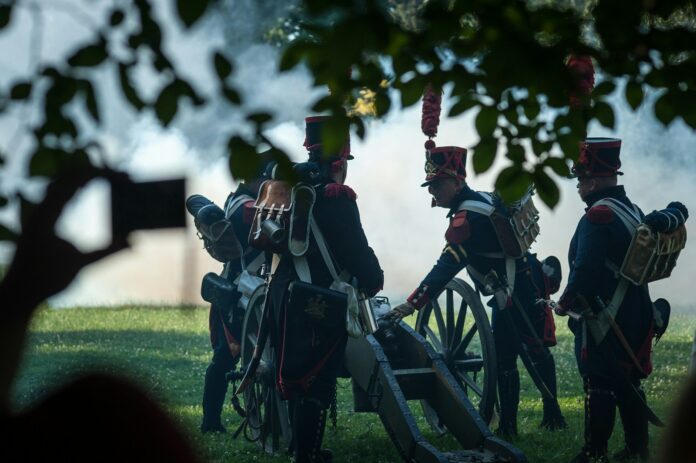The Scottish Highlands are known for their rich history, breathtaking landscapes, and ancient structures. For those seeking to immerse themselves in the region’s heritage, a visit to Inverness offers a perfect gateway to explore three of the area’s most significant historical landmarks: the Clava Cairns, the Culloden Battlefield, and Urquhart Castle. This tour provides an opportunity to travel back in time, from the prehistoric stone circles of the Clava Cairns to the dramatic battlefield of Culloden and the medieval stronghold of Urquhart Castle on the shores of Loch Ness.
In this article, we explore each of these iconic sites in detail, providing valuable insights into their historical significance, what visitors can expect, and tips for making the most of this incredible journey through the heart of Scotland.
1. Inverness: Gateway to the Highlands
Before diving into the specifics of each site, it’s important to understand the strategic importance of Inverness. Known as the “Capital of the Highlands,” Inverness has long been a central hub for travelers and locals alike. The town’s position along the River Ness makes it an ideal starting point for exploring the surrounding area, including the famed Loch Ness, the historic battlefields, and ancient stone monuments.
Visitors can enjoy the town’s modern amenities, dining options, and traditional Scottish hospitality before heading out on a day trip to discover the deep historical roots of the region.
2. Clava Cairns: Ancient Mysteries and Stone Circles
A. History of Clava Cairns
The Clava Cairns are a group of ancient burial mounds and standing stones located just outside Inverness. These Bronze Age structures, dating back approximately 4,000 years, are believed to have been used for funerary purposes, and their design reflects the spiritual beliefs and practices of Scotland’s prehistoric inhabitants.
The cairns consist of three main burial chambers, each surrounded by stone circles. The intricate layout and precise alignment of the stones suggest that these sites were also used to observe astronomical events, such as the winter solstice.
B. The Outlander Connection
For fans of the Outlander Series, Clava Cairns holds special significance as the inspiration for Craigh na Dun, the fictional stone circle through which Claire travels back in time. While the site itself is not featured in the show, it captures the mystical atmosphere of Scotland’s ancient past, making it a must-visit for any fan of the series.
C. Visiting the Cairns
- What to See: Visitors to the Clava Cairns can explore the well-preserved stone structures, walk among the standing stones, and marvel at the intricate carvings found on some of the stones. The site is small but incredibly atmospheric, with an otherworldly feel.
- Best Time to Visit: Early morning or late afternoon visits provide a quieter experience, allowing visitors to fully appreciate the solitude and mystery of the site.
3. Culloden Battlefield: The Last Stand of the Jacobites
A. The Battle of Culloden
On April 16, 1746, the Battle of Culloden marked the end of the Jacobite uprising, a rebellion aimed at restoring the Stuart monarchy to the throne of Britain. The battle was a decisive victory for the British government forces led by the Duke of Cumberland, who crushed the Jacobite forces led by Prince Charles Edward Stuart (also known as Bonnie Prince Charlie). The defeat had devastating consequences for the Highland clans, many of whom had supported the Jacobite cause.
The battle, which lasted less than an hour, took place on the bleak, windswept moor near Inverness. The aftermath of the battle brought about harsh retribution for the Highlanders, including the suppression of Gaelic culture, the disarmament of the clans, and the destruction of their way of life.
B. The Battlefield and Visitor Centre
Today, the Culloden Battlefield is a somber and moving memorial to the fallen Jacobites. The battlefield itself remains largely unchanged, and visitors can walk the same ground where the battle took place.
- Visitor Centre: The Culloden Visitor Centre offers a detailed account of the battle, including an interactive exhibit, a film reenactment, and displays of weapons, clothing, and artifacts from the time. The centre also provides context on the causes of the uprising and its long-term effects on Scottish history.
- Memorials: On the battlefield, visitors can see the Clan Stones, which commemorate the clans who fought and died during the battle. The large Cairn in the center of the battlefield stands as a tribute to the fallen warriors.
C. Exploring the Battlefield
- Walking the Battlefield: A network of paths allows visitors to walk across the battlefield, with interpretive panels providing insight into key moments of the battle. This is a deeply moving experience, especially for those with a connection to the Highlands or the Jacobite cause.
- Guided Tours: For those interested in a more in-depth exploration of the site, guided tours are available, led by knowledgeable historians who bring the events of the day to life.
4. Urquhart Castle: A Medieval Fortress on Loch Ness
A. History of Urquhart Castle
Perched on the banks of Loch Ness, Urquhart Castle has a history that stretches back over 1,000 years. The castle played a key role in the struggles for control of the Scottish Highlands, changing hands numerous times between the Scots and the English during the Wars of Scottish Independence. It was also a focal point during the clan feuds that shaped the region’s history.
The castle was largely destroyed in the late 17th century to prevent it from falling into Jacobite hands, but its dramatic ruins still stand today, offering visitors a glimpse into Scotland’s medieval past.
B. The Loch Ness Connection
In addition to its historical significance, Urquhart Castle is known for its location on the shores of Loch Ness, making it one of the most photographed spots in the Highlands. The castle’s tower offers stunning views over the loch, and visitors can keep an eye out for any signs of the legendary Loch Ness Monster.
C. Visiting Urquhart Castle
- Exploring the Ruins: Visitors can explore the remains of the castle, including the Grant Tower, the gatehouse, and the great hall. The castle’s location on a promontory overlooking Loch Ness provides an unforgettable setting for photography.
- Boat Tours: Many tours of Loch Ness include a stop at Urquhart Castle, allowing visitors to arrive by boat and explore the ruins before continuing their journey across the loch.
- Visitor Centre: The Urquhart Castle Visitor Centre offers exhibits on the castle’s history, as well as a café and gift shop.
5. Booking the Inverness Clava Cairns, Culloden Battlefield, and Urquhart Castle Tour
For those looking to experience this historic journey, bookings can be made through Viator, offering convenient packages that include transportation and guided tours of each location.
- Guided tours typically include transportation from Inverness, as well as entry to the Culloden Visitor Centre and Urquhart Castle.
- Tour options may also include stops at additional sites in the Highlands, such as Fort Augustus or Loch Ness cruises, depending on the package selected.
6. Practical Tips for Visitors
- Tour Duration: The full-day tour typically lasts around 8-10 hours, depending on the number of stops and additional activities.
- What to Bring: Comfortable walking shoes are recommended, as the terrain at both Culloden and Urquhart Castle can be uneven. It’s also a good idea to bring a waterproof jacket, as Highland weather can change quickly.
- Best Time to Visit: Spring and summer offer the best weather for visiting the Highlands, with longer daylight hours and milder temperatures.
7. Conclusion
The Inverness Clava Cairns, Culloden Battlefield, and Urquhart Castle tour offers a deep dive into Scotland’s rich history, from the ancient mysteries of the Clava Cairns to the dramatic events of the Battle of Culloden and the medieval grandeur of Urquhart Castle. This journey through the Highlands is a must for history buffs, Outlander fans, and anyone looking to connect with Scotland’s past.
Disclaimer: This information is provided to the best of our knowledge. For the most accurate details and up-to-date information, please refer to the booking page on Viator.
MORE FROM IZASE


